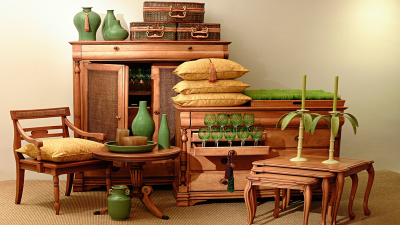
Why Choose Used Furniture?
Used furniture holds appeal for reasons that go beyond surface-level advantages. Many pieces carry unique character—vintage designs, handcrafted details, or timeless styles that are hard to find in mass-produced items. These pieces can add depth to a room, telling subtle stories through their wear and craftsmanship. Additionally, opting for secondhand items aligns with a mindset of making intentional choices, prioritizing items that have already stood the test of time.
The Advantages of Secondhand Pieces
l Sustainable Impact: Reusing furniture reduces the demand for new resources, from raw materials to manufacturing energy. This choice minimizes waste and lessens the environmental footprint associated with producing and transporting new items.
l Durability: Older furniture often boasts solid craftsmanship. Pieces made decades ago were frequently constructed with sturdy materials like hardwood frames or reinforced joints, designed to last through years of use. This longevity means they can continue to serve well in a new home.
l Style Versatility: Mixing secondhand items with newer pieces creates layered, eclectic spaces. Vintage dressers, mid-century chairs, or classic wooden tables can complement modern decor, adding texture and uniqueness that feels curated rather than cookie-cutter.
Key Considerations When Selecting Used Furniture
l Structural Integrity: Check for stability in larger items like sofas, tables, and cabinets. Wiggle joints, loose legs, or sagging seats may indicate underlying issues that are hard to fix.
l Compatibility with Space: Measure doorways, hallways, and the intended room before committing. Even a well-crafted piece won’t work if it can’t fit through entryways or overwhelms the space.
l Condition of Surfaces: Look for signs of excessive wear that might affect functionality—stains that resist cleaning, peeling finishes, or broken hardware. Minor flaws can often be addressed, but major damage may limit the piece’s usability.
Reliable Channels for Finding Used Furniture
l Local Thrift Stores: These community-focused spots often curate a rotating selection of items, from everyday pieces to unique finds. Visiting regularly allows for discovering new arrivals that match specific needs.
l Community Marketplaces: Neighborhood groups or local forums frequently feature residents selling furniture they no longer need. This can be a way to find pieces from nearby, making transport simpler.
l Vintage Shops: Specializing in older or designer items, these stores often vet pieces for quality, making them a good source for well-preserved vintage or retro furniture.
l Consignment Stores: These establishments work with sellers to showcase gently used items, many of which are in excellent condition and reflect current or timeless styles.
Choosing used furniture is a decision that blends practicality with purpose. It celebrates the enduring value of well-made items, supports sustainable practices, and allows for creating spaces with distinct personality. By approaching the process with attention to quality and compatibility, anyone can find pieces that not only serve a function but also add meaning to their home.














